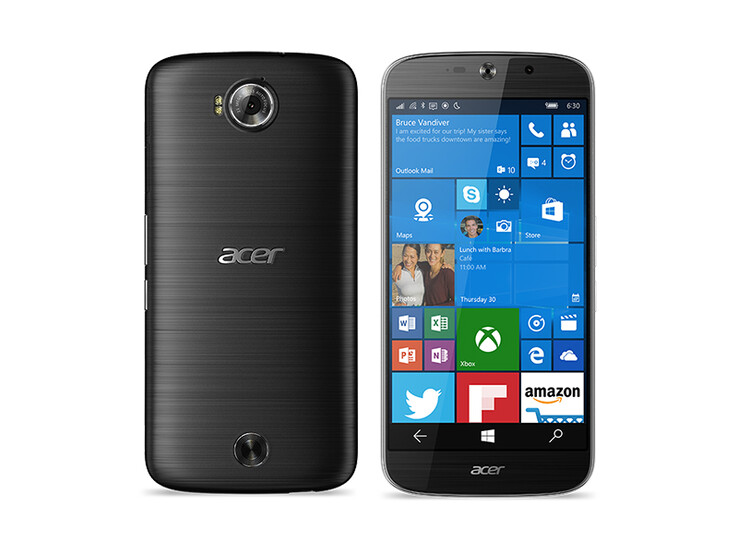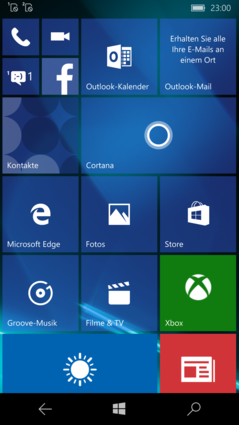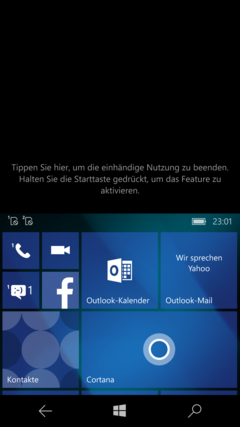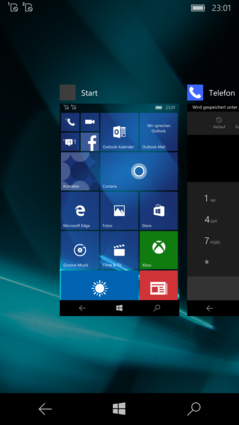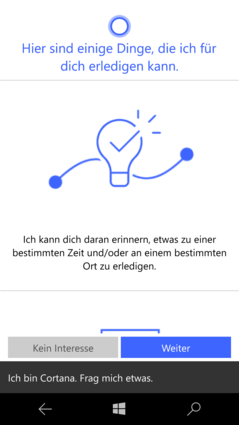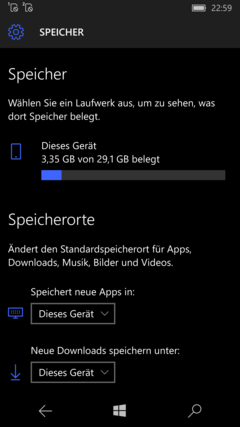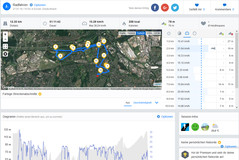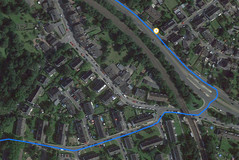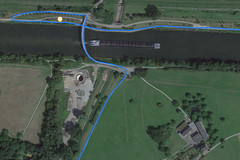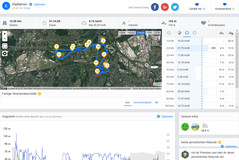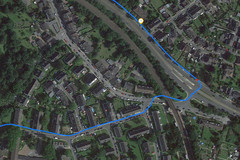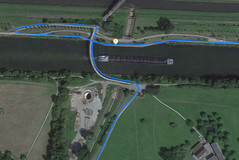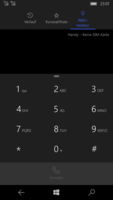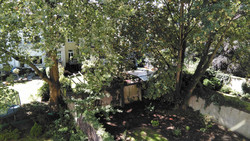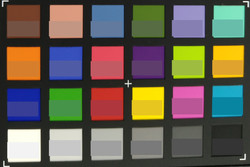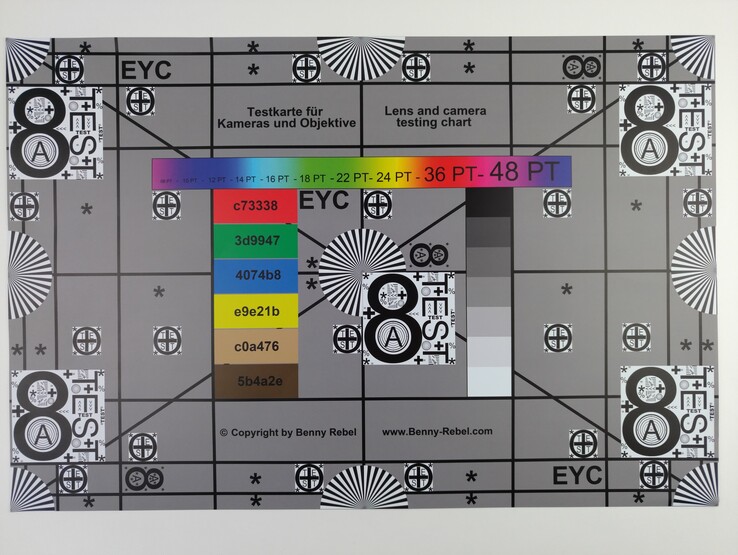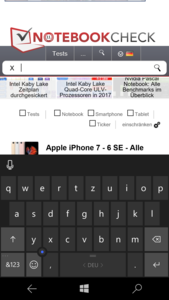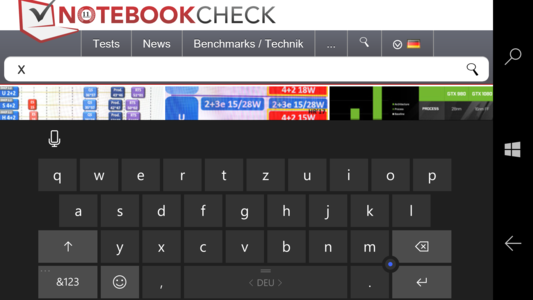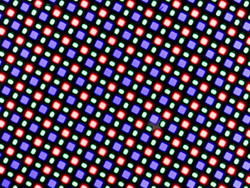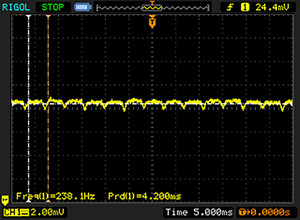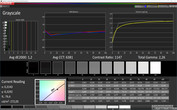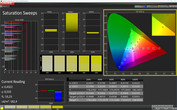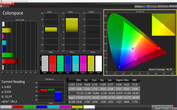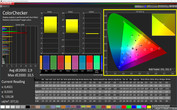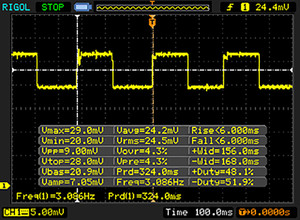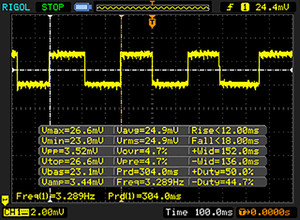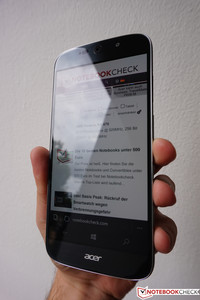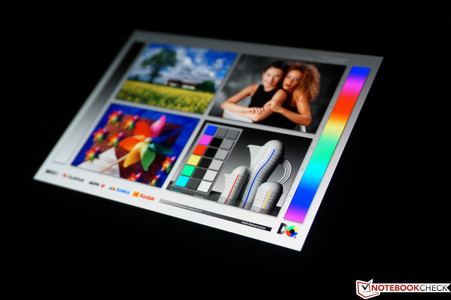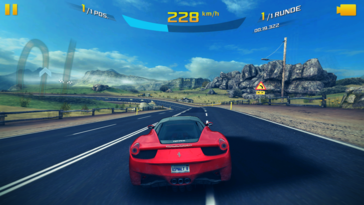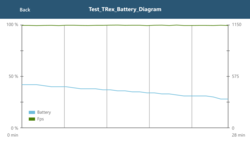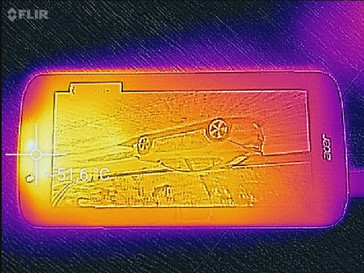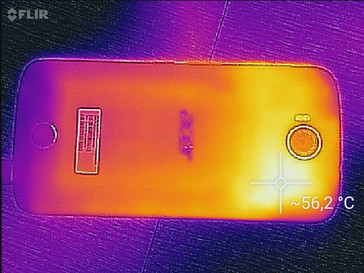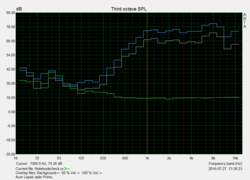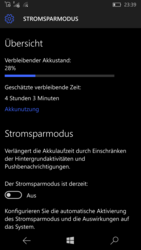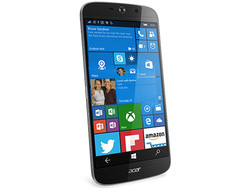Acer Liquid Jade Primo Smartphone Review
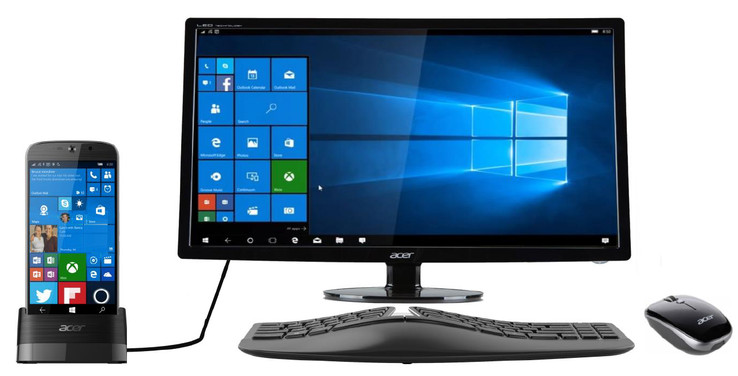
For the original German review, see here.
Acer is primarily known for laptops and tablets in the electronics branch. Until now, smartphones were more limited to lower mid-range handsets. The Liquid Jade Primo definitely changes this now. Based on Windows 10 Mobile, the premium smartphone is to help Microsoft's ailing operating system a bit, and the Continuum function is to especially lure buyers. It enables using the smartphone as a PC and Acer accordingly includes the matching docking station right away.
The direct opponent is Microsoft's Lumia 950 lineup. Our review sample's size sooner corresponds to that of the Lumia 950 XL, but the components more to those of the Lumia 950. Therefore, we will list both versions for our comparisons. Naturally, the premium claim makes models with other operating systems alternatives. Among them, Samsung's Galaxy S7, OnePlus' 3, Huawei's P9 Plus, and HTC's 10. Apple's iPhone 6s Plus is considerably more expensive and thus not really a direct rival, but we will also list it in our charts just out of interest.
Case
Our first impression of Acer's Liquid Jade Primo is solid. It is not surprising that a smartphone with a 5.5-inch screen is not very compact. Nevertheless, the review sample is one of the biggest models within our comparison group. Only the iPhone 6s Plus by Apple is even bigger. A reason for the dimensions is also both very thick edges above and below the display. That makes using it with only one hand quite a challenge. The one-hand mode that can be enabled by holding the start button is helpful here. The rear-facing camera lens juts out marginally, and the handset rocks quite readily when placed on a table.
The casing's quality cannot meet its premium claim. Our review sample's build is not flawless since the SIM cover has a lot of play and consequently almost always produces noises when touched. The rear is rounded toward the sides and has a lightly textured surface, but it is very obviously made of plastic. The rear cannot be removed, but pressure and/or twisting attempts lead to very audible cracking noises. The smartphone is presently only available in black, but a chrome-colored strip on the front adds a pleasant contrast. In total, we would have hoped for more in terms of quality and the rivals have an advantage here.
Connectivity
Despite the high price, we have to criticize the connectivity. Acer treats its Jade Primo to a Snapdragon SoC by Qualcomm, 3 GB of working memory, and 32 GB of internal storage which is reduced to almost 26 GB after initial use. The storage can be expanded via a micro-SD card (128 GB maximum). Unfortunately, the micro-SD card can only be used in conjunction with a (nano) SIM card. The storage expansion option cannot be used when two SIM cards are needed. Even some mid-range handsets solve this better.
Acer installs a USB 3.0 port (gen. 1) that also supports connecting peripherals via USB-OTG on the lower edge. It also makes video output possible, which is especially interesting in connection with the docking station and Continuum function. We will take a closer look at this later. The smartphone regrettably does not offer NFC, Wi-Fi Direct, a fingerprint scanner or FM radio. Bluetooth version 4.1 is incorporated.
Software
The Jade Primo is powered by Windows 10 Mobile operating system, making Acer's smartphone a member of a small circle of handsets. Only Microsoft's Lumia smartphones primarily use the mobile version of the well-known operating system. Acer does not preload superfluous adware apps, and Windows already comes with many important apps for common tasks, such as Office (license needed). We previously closely examined Windows Mobile and the Continuum (using the smartphone as a PC) function in the reviews of the Lumia 950 and Lumia 950 XL smartphones. Since there have not been any significant updates to date, we would refer to both tests for more information. In short: The smartphone-PC could throughout satisfy users who do not have to do any demanding work and primarily use their PC for writing emails or browsing on the Internet.
Using Windows 10 Mobile is intuitive overall, and it is a good alternative for newcomers. However, the biggest problem is the limited app offerings. Especially users switching from Android or iOS should inform themselves about app availability beforehand. Unfortunately, unlocking the review sample via Windows Hello is not supported. The lower part of some apps are covered due to the virtual controls and it could thus happen that check boxes are barely visible (e.g. GFXBench). Then, the controls have to be faded out by swiping upward.
Communication and GPS
Both nano-SIM slots support LTE connections (Cat.6) with download rates of up to 300 Mbit/s (upload max. 50 Mbit/s). However, Acer is a bit stingy with the supported frequencies (see tech specs at the beginning of the test). All networks important for Germany are supported, but the handset is not a globetrotter. The reception in the German urban Telekom network was inconspicuous.
The smartphone's Wi-Fi performance is a highlight as it supports all up-to-date standards to 802.11ac in the 2.4 and 5 GHz networks. The measured transfer rates in our standardized test (router: Linksys EA8500; ~1 meter distance) of 551 Mbit/s in receive and 451 Mbit/s in send are outstanding and can easily compete with high-quality laptops. We did not encounter connection issues, either.
| Networking | |
| iperf Server (receive) TCP 1 m | |
| Acer Liquid Jade Primo | |
| BlackBerry Priv | |
| LG G5 | |
| OnePlus 3 | |
| iperf Client (transmit) TCP 1 m | |
| Acer Liquid Jade Primo | |
| OnePlus 3 | |
| BlackBerry Priv | |
| LG G5 | |
The GPS satellite network is used for localization, and it is also very fast subjectively. Unfortunately, Windows 10 Mobile does not offer any apps for testing the performance, and thus we focus on the outcomes of our bike ride. When looking at the screenshots, the very precise routing is noticed which even cuts Garmin's Edge 500 professional navigation system down to size. The total route is consequently also a bit longer. Acer's is thus perfectly suitable for navigating by car or by bike. In line with this, it is possible to download offline maps in the maps app (worldwide).
Telephone and Call Quality
The phone app features different tabs for log, favorites, and keypad. Further elements, such as voicemail or contacts, are accessible depending on which tab is open. That might need some getting used to but then functions quite well. A favored SIM card can be selected in the settings, and the preferred network (2G, 3G, 4G) can also be marked per SIM. Acer's smartphone was inconspicuous when making calls, and there were no intelligibility issues. This is also true for the hands-free mode as long as the rear-sided speaker is not covered. A headset is also included, and its quality is satisfactory.
Cameras
On paper, Acer's Liquid Jade Primo sports good cameras. 21 MP on the rear and 8 MP on the front sound decent at first, but there are restrictions. Foremost to mention here is the camera app. Although some parameters can be set manually (ISO, white balance, etc.), various photo modes are completely absent. The settings for both photos and videos are also only basic.
The 8-megapixel front-facing camera and its 84-degree wide angle lens do a good job primarily in sufficient light. Thanks to the wide angle, it is easily possible to shoot groufies. However, the outcomes are visibly worse in darker surroundings, and strong noise has to be accepted. The front camera does not have a flash.
The rear-facing camera shoots decent photos in daylight, but the photos are not quite as sharp when compared directly with the opponents - despite the high resolution. This is, however, first very visible when zoomed. The camera is definitely suitable for snapshots. The low-light performance disappointed us as it presented extreme image noise and not many details (e.g. traffic sign in scene 3) remain.
Videos can be recorded in HD, Full HD or 4K, but all three resolutions are limited to 30 FPS. The sensor does not cope well with fast movements, and the outcome is visibly darker primarily in 4K videos.
We photograph ColorChecker Passport and the test chart as full-frame as possible in defined test conditions for a better evaluation of the colors and image sharpness. The results are not edited afterwards. Some colors are a bit too saturated, but that does not hurt the photos. The camera benefits from the high resolutions in the test chart, and the outcome is very sharp especially in the image center. The image fades a bit toward the edges, though.
Accessories and Warranty
The accessories included for the Liquid Jade Primo are very extensive. In addition to the usual items, such as the (10-watt) power supply, USB cable, headset, and service leaflets, buyers also find the docking station. It can be used for recharging the smartphone as well as connecting other peripherals (mouse + keyboard) and a monitor. A total of three USB ports (2x USB 2.0 + 1x USB 3.0) and an HDMI port are present for this. The docking station has a dedicated power supply. Acer optionally offers a matching flip cover (EAN: 4713392463433) for around 25 Euros (~$28).
The smartphone comes with a 24-month warranty period; the accessories are only covered for one year. Furthermore, the two-year warranty applies in Germany.
Input Devices and Handling
The capacitive touchscreen detects up to 10 fingers and also still responds reliably in the lateral areas. Acer applies Corning's Gorilla Glass 3 for protecting the screen. The gliding properties are very good, and the subjective work speed is also very good; stutters are virtually absent while navigating. The preloaded keyboard supports all common functions including word suggestion or swipe inputs. A small, blue cursor additionally allows navigating accurately in texts. The keys are pleasantly sized, but a lot of room is wasted in landscape mode and not much of the actual content is left. Both physical keys on the right have been integrated impeccably and offer rich pressure points.
Display
Asus installs a 5.5-inch AMOLED screen with a resolution of 1920x1080 pixels into the Liquid Jade Primo. The resulting pixel density of 401 PPI leads to sharp texts and images. The AMOLED makes a good impression subjectively, and it convinces with vivid colors.
Our measured rates are just as impressive. We determined a maximum brightness of 379 cd/m² on a pure white screen, and even 379 cd/m² when bright and dark content was distributed evenly over the screen (APL50). These are very good results especially for an AMOLED. Since dark image content is not illuminated, the black level is 0 cd/m², which leads to a very high contrast ratio. The sensor does not increase the brightness when enabled. We only discovered PWM flickering at very low brightness levels.
Screen Flickering / PWM (Pulse-Width Modulation)
| Screen flickering / PWM detected | 238.1 Hz | ||
The display backlight flickers at 238.1 Hz (worst case, e.g., utilizing PWM) . The frequency of 238.1 Hz is relatively low, so sensitive users will likely notice flickering and experience eyestrain at the stated brightness setting and below. In comparison: 53 % of all tested devices do not use PWM to dim the display. If PWM was detected, an average of 8108 (minimum: 5 - maximum: 343500) Hz was measured. | |||
| |||||||||||||||||||||||||
Brightness Distribution: 88 %
Center on Battery: 355 cd/m²
Contrast: ∞:1 (Black: 0 cd/m²)
ΔE ColorChecker Calman: 2.9 | ∀{0.5-29.43 Ø4.78}
ΔE Greyscale Calman: 1.2 | ∀{0.09-98 Ø5}
Gamma: 2.26
CCT: 6381 K
| Acer Liquid Jade Primo AMOLED, 1920x1080, 5.5" | Microsoft Lumia 950 AMOLED, 2560x1440, 5.2" | Microsoft Lumia 950 XL AMOLED, 2560x1440, 5.7" | Samsung Galaxy S7 SAMOLED, 2560x1440, 5.1" | OnePlus 3 Optic-AMOLED, 1920x1080, 5.5" | Huawei P9 Plus AMOLED, 1920x1080, 5.5" | HTC 10 Super LCD 5, 2560x1440, 5.2" | Apple iPhone 6S Plus IPS, 1920x1080, 5.5" | |
|---|---|---|---|---|---|---|---|---|
| Screen | -16% | -15% | 12% | -33% | -71% | -18% | -24% | |
| Brightness middle (cd/m²) | 355 | 292 -18% | 297 -16% | 350 -1% | 419 18% | 361 2% | 445 25% | 583 64% |
| Brightness (cd/m²) | 356 | 298 -16% | 297 -17% | 351 -1% | 431 21% | 366 3% | 434 22% | 560 57% |
| Brightness Distribution (%) | 88 | 92 5% | 93 6% | 98 11% | 84 -5% | 87 -1% | 93 6% | 91 3% |
| Black Level * (cd/m²) | 0.36 | 0.46 | ||||||
| Colorchecker dE 2000 * | 2.9 | 2.48 14% | 2.67 8% | 2.04 30% | 4.1 -41% | 5.1 -76% | 2.8 3% | 3.55 -22% |
| Colorchecker dE 2000 max. * | 10.5 | 3.98 62% | 3.25 69% | 12 -14% | 10 5% | 5.8 45% | ||
| Greyscale dE 2000 * | 1.2 | 1.97 -64% | 2.81 -134% | 1.63 -36% | 3.3 -175% | 5.5 -358% | 3.7 -208% | 3.88 -223% |
| Gamma | 2.26 97% | 2.06 107% | 2.08 106% | 2.07 106% | 2.1 105% | 2.24 98% | 2.31 95% | 2.2 100% |
| CCT | 6381 102% | 6640 98% | 6379 102% | 6391 102% | 6550 99% | 7388 88% | 7164 91% | 7280 89% |
| Color Space (Percent of AdobeRGB 1998) (%) | 66.31 | 86.86 | 89.38 | 59.05 | ||||
| Color Space (Percent of sRGB) (%) | 99.79 | 99.35 | 100 | 92.8 | ||||
| Contrast (:1) | 1236 | 1267 |
* ... smaller is better
Unlike many smartphones based on AMOLED, Acer's Liquid Jade Primo does not offer profiles for adapting the color reproduction. Therefore, the user will have to live with the AMOLED panel's very saturated colors. The other measurements presented very low average DeltaE 2000 shifts in the grayscales (1.2) and colors (2.9) already in delivery state. Only single color tones (red & green) display very high shifts.
Display Response Times
| ↔ Response Time Black to White | ||
|---|---|---|
| 12 ms ... rise ↗ and fall ↘ combined | ↗ 6 ms rise | |
| ↘ 6 ms fall | ||
| The screen shows good response rates in our tests, but may be too slow for competitive gamers. In comparison, all tested devices range from 0.1 (minimum) to 240 (maximum) ms. » 30 % of all devices are better. This means that the measured response time is better than the average of all tested devices (20.2 ms). | ||
| ↔ Response Time 50% Grey to 80% Grey | ||
| 30 ms ... rise ↗ and fall ↘ combined | ↗ 12 ms rise | |
| ↘ 18 ms fall | ||
| The screen shows slow response rates in our tests and will be unsatisfactory for gamers. In comparison, all tested devices range from 0.165 (minimum) to 636 (maximum) ms. » 39 % of all devices are better. This means that the measured response time is similar to the average of all tested devices (31.6 ms). | ||
Thanks to the decent brightness and high contrast, outdoor use is no problem even in bright environments. As usual for all devices with a glossy screen, reflections should be avoided. The viewing-angle stability is very good. However, a greenish-blue shimmer becomes visible starting at approximately 45 degrees as typical for AMOLED. This does not affect the content legibility.
Performance
Qualcomm Snapdragon 808 is an SoC with 6 CPU cores (2x Cortex A57, 4x Cortex A53) and the Adreno 418 graphics unit. The chip has been on the market for some time and is a slightly slimmer version of the popular Snapdragon 810; thus it marks the entry into the high-end sector. Deviating from the maximum reference design of 2 GHz, the Snapdragon 808 in our review sample clocks at only 1.8 GHz. This difference is, however, sooner noticed in the benchmarks and not in practice. The working memory capacity of 3 GB is sufficient.
Unfortunately, the benchmark situation has not changed much since our last tests of Windows-based smartphones, and it is still difficult to make a cross-platform performance comparison. The review sample's performance is absolutely sufficient for practice at least subjectively.
A beta version of AnTuTu v6 for Windows 10 Mobile is now available. However, the score is very low compared with the Android rivals. The comparison with both Microsoft smartphones is much more interesting since the Lumia 950 based on identical hardware is defeated marginally. The larger Lumia 950 XL with a stronger Snapdragon 810 is once more faster.
This outcome also applies to the browser tests that we performed using the preloaded Microsoft Edge. Subjectively, we did not encounter problems while browsing on the Internet and everything ran smoothly even on long websites.
| AnTuTu v6 - Total Score | |
| OnePlus 3 | |
| Apple iPhone 6S Plus | |
| HTC 10 | |
| Samsung Galaxy S7 | |
| Huawei P9 Plus | |
| Microsoft Lumia 950 XL | |
| Acer Liquid Jade Primo | |
| GFXBench (DX / GLBenchmark) 2.7 | |
| T-Rex Onscreen | |
| OnePlus 3 | |
| Apple iPhone 6S Plus | |
| Samsung Galaxy S7 | |
| Huawei P9 Plus | |
| HTC 10 | |
| Acer Liquid Jade Primo | |
| Microsoft Lumia 950 XL | |
| Microsoft Lumia 950 | |
| 1920x1080 T-Rex Offscreen | |
| OnePlus 3 | |
| Samsung Galaxy S7 | |
| Apple iPhone 6S Plus | |
| HTC 10 | |
| Huawei P9 Plus | |
| Microsoft Lumia 950 XL | |
| Acer Liquid Jade Primo | |
| Microsoft Lumia 950 | |
| GFXBench 3.0 | |
| on screen Manhattan Onscreen OGL | |
| OnePlus 3 | |
| Apple iPhone 6S Plus | |
| Samsung Galaxy S7 | |
| HTC 10 | |
| Huawei P9 Plus | |
| Microsoft Lumia 950 XL | |
| Acer Liquid Jade Primo | |
| Microsoft Lumia 950 | |
| 1920x1080 1080p Manhattan Offscreen | |
| OnePlus 3 | |
| Samsung Galaxy S7 | |
| HTC 10 | |
| Apple iPhone 6S Plus | |
| Huawei P9 Plus | |
| Microsoft Lumia 950 XL | |
| Acer Liquid Jade Primo | |
| Microsoft Lumia 950 | |
| Basemark X 1.1 - Medium Quality | |
| Samsung Galaxy S7 | |
| Microsoft Lumia 950 XL | |
| Acer Liquid Jade Primo | |
| Microsoft Lumia 950 | |
| OnePlus 3 | |
| Octane V2 - Total Score | |
| Apple iPhone 6S Plus | |
| Samsung Galaxy S7 | |
| Huawei P9 Plus | |
| OnePlus 3 | |
| HTC 10 | |
| Microsoft Lumia 950 XL | |
| Acer Liquid Jade Primo | |
| Microsoft Lumia 950 | |
| Mozilla Kraken 1.1 - Total | |
| Microsoft Lumia 950 | |
| Acer Liquid Jade Primo | |
| Microsoft Lumia 950 XL | |
| HTC 10 | |
| OnePlus 3 | |
| Huawei P9 Plus | |
| Samsung Galaxy S7 | |
| Apple iPhone 6S Plus | |
| JetStream 1.1 - Total Score | |
| Apple iPhone 6S Plus | |
| Samsung Galaxy S7 | |
| Huawei P9 Plus | |
| OnePlus 3 | |
| HTC 10 | |
| Microsoft Lumia 950 XL | |
| Acer Liquid Jade Primo | |
| Microsoft Lumia 950 | |
* ... smaller is better
Games
Even demanding titles like the racing game Asphalt 8: Airborne are no problem thanks to the good performance, and they can also be played in high details. The sensors in our review sample functioned reliably; only the position sensor sometimes needed a moment before the image rotated. The rear-sided speaker could quickly be covered when gaming in portrait mode.
Emissions
Temperature
Acer's Liquid Jade Primo struggles with high surface temperatures despite its very large casing. The handset heats up palpably during relatively undemanding tasks (36-37 °C on average), but the temperatures are at least distributed very evenly. That first looks different during load since it is primarily the upper and middle areas that get warm here. We measured a maximum of almost 52 °C - this is no longer pleasant. The advantage of these temperatures is the stable performance. According to the GFXBench battery test, the SoC's performance does not fluctuate even after about half an hour.
(-) The maximum temperature on the upper side is 51.7 °C / 125 F, compared to the average of 35.2 °C / 95 F, ranging from 21.9 to 247 °C for the class Smartphone.
(-) The bottom heats up to a maximum of 52.5 °C / 127 F, compared to the average of 34 °C / 93 F
(±) In idle usage, the average temperature for the upper side is 37.6 °C / 100 F, compared to the device average of 32.9 °C / 91 F.
Speaker
The rear-sided speaker's position is not ideal. The sound muffles a bit as soon as the handset is placed on a table. That is too bad since the little module is not at all bad seeing that it barely hums even in high volumes (87 dB(A) maximum). As expected, basses are virtually absent and focus is placed on trebles. Nevertheless, the quality is easily enough for YouTube videos or some background music. External speakers or headphones can be connected via the 3.5-mm jack or Bluetooth. The performance was inconspicuous in both cases.
Acer Liquid Jade Primo audio analysis
(+) | speakers can play relatively loud (87.2 dB)
Bass 100 - 315 Hz
(-) | nearly no bass - on average 39.3% lower than median
(+) | bass is linear (6.4% delta to prev. frequency)
Mids 400 - 2000 Hz
(±) | reduced mids - on average 6.9% lower than median
(±) | linearity of mids is average (8.1% delta to prev. frequency)
Highs 2 - 16 kHz
(+) | balanced highs - only 3.5% away from median
(+) | highs are linear (3.8% delta to prev. frequency)
Overall 100 - 16.000 Hz
(±) | linearity of overall sound is average (24.7% difference to median)
Compared to same class
» 59% of all tested devices in this class were better, 7% similar, 34% worse
» The best had a delta of 11%, average was 35%, worst was 134%
Compared to all devices tested
» 75% of all tested devices were better, 5% similar, 20% worse
» The best had a delta of 4%, average was 24%, worst was 134%
HTC 10 audio analysis
(+) | speakers can play relatively loud (83.1 dB)
Bass 100 - 315 Hz
(-) | nearly no bass - on average 20.4% lower than median
(±) | linearity of bass is average (12.9% delta to prev. frequency)
Mids 400 - 2000 Hz
(±) | higher mids - on average 7.3% higher than median
(±) | linearity of mids is average (8.9% delta to prev. frequency)
Highs 2 - 16 kHz
(±) | higher highs - on average 10.3% higher than median
(+) | highs are linear (6% delta to prev. frequency)
Overall 100 - 16.000 Hz
(±) | linearity of overall sound is average (27.4% difference to median)
Compared to same class
» 71% of all tested devices in this class were better, 5% similar, 24% worse
» The best had a delta of 11%, average was 35%, worst was 134%
Compared to all devices tested
» 83% of all tested devices were better, 4% similar, 13% worse
» The best had a delta of 4%, average was 24%, worst was 134%
Frequency diagram in comparison (check boxes above can be turned on/off!)
Rate 1: Pink Noise 100 % volume; Rate 2: Audio off
Energy Management
Acer's smartphone consumes between 1.22 and 2.32 watts in idle. Thus, it is more frugal than both Lumias by Microsoft but also needs more energy than all other opponents. The maximum load power consumption of 8.07 watts is also relatively high, but it is still within limits. The included 10-watt power supply is sufficiently sized. Acer should rework the standby consumption that is definitely too high at 0.86 watts. This is also noticed in practical use.
| Off / Standby | |
| Idle | |
| Load |
|
Key:
min: | |
| Acer Liquid Jade Primo 2870 mAh | Microsoft Lumia 950 3000 mAh | Microsoft Lumia 950 XL 3340 mAh | Samsung Galaxy S7 3000 mAh | OnePlus 3 3000 mAh | Huawei P9 Plus 3400 mAh | HTC 10 3000 mAh | Apple iPhone 6S Plus 2750 mAh | |
|---|---|---|---|---|---|---|---|---|
| Power Consumption | -14% | -47% | 40% | 27% | 38% | 16% | 32% | |
| Idle Minimum * (Watt) | 1.22 | 1.97 -61% | 2.85 -134% | 0.68 44% | 0.57 53% | 0.87 29% | 0.68 44% | 0.5 59% |
| Idle Average * (Watt) | 2.25 | 2.42 -8% | 2.95 -31% | 1.02 55% | 1.24 45% | 1.2 47% | 1.49 34% | 1.9 16% |
| Idle Maximum * (Watt) | 2.32 | 2.96 -28% | 3.26 -41% | 1.14 51% | 1.36 41% | 1.27 45% | 1.91 18% | 2.2 5% |
| Load Average * (Watt) | 7.84 | 5.94 24% | 8.92 -14% | 4.73 40% | 5.92 24% | 4.69 40% | 7.4 6% | 3.2 59% |
| Load Maximum * (Watt) | 8.07 | 7.79 3% | 9.39 -16% | 7.16 11% | 10.53 -30% | 5.63 30% | 9.71 -20% | 6.4 21% |
* ... smaller is better
Battery Runtime
The non-removable battery has a capacity of 2870 mAh. Despite the large casing, it is one of the smallest modules in our comparison group. The high consumption rates thus make very long battery runtimes impossible. We only timed a bit over 5.5 hours in our Wi-Fi test using adapted brightness - too short for a modern smartphone. The energy-saving mode could be used optionally for increasing the battery life a bit.
Consequently, a recharging possibility should always be planned for getting through a day when using the smartphone intensively. A complete charging takes roughly two hours when the smartphone is on. Wireless charging is unfortunately not an option.
| Acer Liquid Jade Primo 2870 mAh | Microsoft Lumia 950 3000 mAh | Microsoft Lumia 950 XL 3340 mAh | Samsung Galaxy S7 3000 mAh | OnePlus 3 3000 mAh | Huawei P9 Plus 3400 mAh | HTC 10 3000 mAh | Apple iPhone 6S Plus 2750 mAh | |
|---|---|---|---|---|---|---|---|---|
| Battery runtime | ||||||||
| WiFi v1.3 (h) | 5.6 | 4.2 -25% | 6.2 11% | 7.6 36% | 14 150% | 8.8 57% | 6.9 23% | 8.6 54% |
Pros
Cons
Verdict
The Liquid Jade Primo is Acer's first premium smartphone based on Windows 10 Mobile. A doubtless advantage is the option of using the smartphone as a PC thanks to Continuum, and Acer considerately includes the matching docking station right away. This is a very interesting solution when the user does not have to manage any demanding tasks. However, there are some problems with using the smartphone, and some things do not seem quite fully developed.
We only get a relatively small battery despite the large casing, and thus the battery life is fairly short. The stability could be better, the surface temperatures are high, the camera only shoots decent photos in sufficient light, and certain configuration features, such as NFC, wireless charging or Windows Hello, are not present. However, the biggest drawback is the limited app offerings by Windows itself, and this will unlikely look different in the foreseeable future.
Acer's Liquid Jade Primo leaves us with mixed feelings. It is superb in some sections but only mediocre in others. As before, a big problem is Windows' limited app offerings.
Advantages are the decent AMOLED panel and the extremely fast Wi-Fi connections. The performance is also solid and, above all, it can always be retrieved stably. The price of approximately 600 Euros (~$674) is quite high, though. The limited app offering makes it difficult for us to recommend it over other smartphones based on Android or iOS. However, Acer's handset is certainly an alternative to Microsoft's Lumias.
Acer Liquid Jade Primo
- 09/06/2016 v5.1 (old)
Andreas Osthoff




